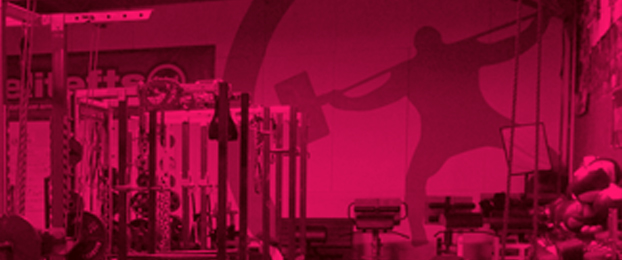
The following is an excerpt from Knowledge and Nonsense: The Science of Nutrition and Exercise by Jamie Hale.
Pilates magic
I’m sure you’ve seen the commercials and read the ads claiming the supremacy of Pilates over weight training or any other fitness-related activity or exercise. Throw away those weights and pick up a Pilates video and learn the secret to fitness (ha ha). Here’s a question for worshippers of Pilates. Don’t you think that Pilates is a form of weight training (added resistance training)?
Proponents of Pilates say that weight training tends to shorten the muscles, but Pilates lengthens them. Lifting weights makes one tight and stiff. However, the truth is all muscles shorten when they contract and lengthen when they relax. If a muscle appears to lengthen due to training, this indicates a loss of skeletal muscle tissue. Obviously, this isn’t what trainees are looking for. If Pilates made muscles longer, this would mean that with prolonged Pilates training, your muscles would continue to get longer. Eventually you wouldn’t be able to move your joints due to increased slack.
Pilates experts claim that Pilates offers over 2000 exercises. There’s much more variety than with weight training. However, the truth is weight training, including free barbells, dumbbells, kettlebells, club bells, non-conforming objects, medicine balls, and so on, offers so many exercises, it’s impossible to count them. Pilates doesn’t even offer a fraction of the variety possible with weight training.
Pilates experts also claim that Pilates corrects muscle imbalances, heals bad backs, and realigns the body. Weight training causes muscle imbalances and is bad for back health.
The truth is properly designed Pilates and weight training programs (other than Pilates resistance training) can be used to correct muscle imbalances, heal bad backs, and realign the body. They can both be detrimental as well if incorporated in an incorrect manner. It is hard to argue the fact that powerlifters, Strongmen, and Olympic weightlifters possess enormous back strength, stability, and power. They lift heavy weights (imagine that).
Take a look at this abstract…
“A weight-bearing exercise is known to improve bone mineral density. However, excessive forces exerted on the lumbar spine can be pathologic. Cadaveric studies have calculated a hypothetical ‘critical compression force’ at which the lumbar spine would suffer collapse. In addition, recent studies have suggested that bone density correlates with strength. Thus far, studies have failed to examine elite power athletes to determine the possible upper range for bone mineral density and critical compression force. Therefore, we recruited the current world record holder in the squat lift with a record squat lift > 469 kg for an examination of lumbar spine bone mineral density. The subject had dual energy x-ray absorptometry (DEXA) and magnetic resonance imaging (MRI) performed on the lumbar spine. The subject also had serum chemistries, cell blood count, and testosterone levels performed. The DEXA scan revealed the highest bone mineral density reported to date. The MRI revealed normal alignment, no evidence of disc herniation, or compressive disc disease. There was no frank or neural foraminal canal stenosis. The estimated compressive force generated on his lumbar spine during the squat lift of > 469 kg doubles the previously reported critical compression force. This case study supports the previously described relationship between strength and bone density and redefines the upper limits of bone density in strength athletes.” (Reference: Dickerson RD, Pertusi R, Smith GH (2000) The upper range of lumbar spine bone mineral density: An examination of the current world record holder in the squat lift. Int J Sports Med 21:469–70.)
Heavy weight training applied in a proper manner enhances back strength (in healthy trainees). No matter what Pilates worshippers tell you, that is the fact. There is no one training regimen that enhances all motor qualities. Applied in a proper manner with other training modes, Pilates can offer benefits for some people.
One more thing—how many different types of Pilates are there? Why should there be so many varieties if the original is so great?
Elite Fitness Systems strives to be a recognized leader in the strength training industry by providing the highest quality strength training products and services while providing the highest level of customer service in the industry. For the best training equipment, information, and accessories, visit us at www.EliteFTS.com.








